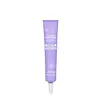What's inside
What's inside
 Key Ingredients
Key Ingredients

 Benefits
Benefits

 Concerns
Concerns

 Ingredients Side-by-side
Ingredients Side-by-side

Water
Skin ConditioningHouttuynia Cordata Extract
Skin ConditioningDipropylene Glycol
HumectantGlycerin
HumectantPhenyl Trimethicone
Skin ConditioningPolyglyceryl-3 Methylglucose Distearate
EmulsifyingStearic Acid
CleansingC12-16 Alcohols
EmollientCarbomer
Emulsion StabilisingHydroxyacetophenone
Antioxidant1,2-Hexanediol
Skin ConditioningPalmitic Acid
EmollientTromethamine
BufferingHydrogenated Lecithin
EmulsifyingCaprylyl Glycol
EmollientDisodium EDTA
Rosmarinus Officinalis Leaf Oil
MaskingButylene Glycol
HumectantBetula Platyphylla Japonica Juice
Skin ConditioningEthylhexylglycerin
Skin ConditioningDipotassium Glycyrrhizate
HumectantPropanediol
SolventBenzyl Glycol
SolventHydrolyzed Glycosaminoglycans
HumectantSodium Hyaluronate
HumectantCentella Asiatica Extract
CleansingSodium Hyaluronate Crosspolymer
HumectantZea Mays Leaf Extract
Skin ConditioningHydrolyzed Hyaluronic Acid
HumectantHydroxypropyltrimonium Hyaluronate
Hyaluronic Acid
HumectantSodium Acetylated Hyaluronate
HumectantWater, Houttuynia Cordata Extract, Dipropylene Glycol, Glycerin, Phenyl Trimethicone, Polyglyceryl-3 Methylglucose Distearate, Stearic Acid, C12-16 Alcohols, Carbomer, Hydroxyacetophenone, 1,2-Hexanediol, Palmitic Acid, Tromethamine, Hydrogenated Lecithin, Caprylyl Glycol, Disodium EDTA, Rosmarinus Officinalis Leaf Oil, Butylene Glycol, Betula Platyphylla Japonica Juice, Ethylhexylglycerin, Dipotassium Glycyrrhizate, Propanediol, Benzyl Glycol, Hydrolyzed Glycosaminoglycans, Sodium Hyaluronate, Centella Asiatica Extract, Sodium Hyaluronate Crosspolymer, Zea Mays Leaf Extract, Hydrolyzed Hyaluronic Acid, Hydroxypropyltrimonium Hyaluronate, Hyaluronic Acid, Sodium Acetylated Hyaluronate
Water
Skin ConditioningGlycerin
HumectantPalmitoyl Tripeptide-5
Skin ConditioningCetyl Alcohol
EmollientSqualane
EmollientHelianthus Annuus Seed Oil
EmollientTocopheryl Acetate
AntioxidantStearyl Alcohol
EmollientGlycolipids
Skin ConditioningGlyceryl Stearate Citrate
EmollientGlyceryl Laurate
EmollientCeramide NP
Skin ConditioningCeramide AP
Skin ConditioningCeramide EOP
Skin ConditioningPhytosphingosine
Skin ConditioningCholesterol
EmollientSodium Lauroyl Lactylate
EmulsifyingCalendula Officinalis Flower Extract
MaskingAlthaea Officinalis Root Extract
Skin ConditioningCaffeine
Skin ConditioningAloe Barbadensis Leaf Juice
Skin ConditioningTocopherol
AntioxidantSorbitan Sesquioleate
EmulsifyingAllantoin
Skin ConditioningPanthenol
Skin ConditioningXanthan Gum
EmulsifyingGlyceryl Stearate
EmollientPhenoxyethanol
PreservativeEthylhexylglycerin
Skin ConditioningWater, Glycerin, Palmitoyl Tripeptide-5, Cetyl Alcohol, Squalane, Helianthus Annuus Seed Oil, Tocopheryl Acetate, Stearyl Alcohol, Glycolipids, Glyceryl Stearate Citrate, Glyceryl Laurate, Ceramide NP, Ceramide AP, Ceramide EOP, Phytosphingosine, Cholesterol, Sodium Lauroyl Lactylate, Calendula Officinalis Flower Extract, Althaea Officinalis Root Extract, Caffeine, Aloe Barbadensis Leaf Juice, Tocopherol, Sorbitan Sesquioleate, Allantoin, Panthenol, Xanthan Gum, Glyceryl Stearate, Phenoxyethanol, Ethylhexylglycerin
Ingredients Explained
These ingredients are found in both products.
Ingredients higher up in an ingredient list are typically present in a larger amount.
Ethylhexylglycerin (we can't pronounce this either) is commonly used as a preservative and skin softener. It is derived from glyceryl.
You might see Ethylhexylglycerin often paired with other preservatives such as phenoxyethanol. Ethylhexylglycerin has been found to increase the effectiveness of these other preservatives.
Glycerin is already naturally found in your skin. It helps moisturize and protect your skin.
A study from 2016 found glycerin to be more effective as a humectant than AHAs and hyaluronic acid.
As a humectant, it helps the skin stay hydrated by pulling moisture to your skin. The low molecular weight of glycerin allows it to pull moisture into the deeper layers of your skin.
Hydrated skin improves your skin barrier; Your skin barrier helps protect against irritants and bacteria.
Glycerin has also been found to have antimicrobial and antiviral properties. Due to these properties, glycerin is often used in wound and burn treatments.
In cosmetics, glycerin is usually derived from plants such as soybean or palm. However, it can also be sourced from animals, such as tallow or animal fat.
This ingredient is organic, colorless, odorless, and non-toxic.
Glycerin is the name for this ingredient in American English. British English uses Glycerol/Glycerine.
Learn more about GlycerinWater. It's the most common cosmetic ingredient of all. You'll usually see it at the top of ingredient lists, meaning that it makes up the largest part of the product.
So why is it so popular? Water most often acts as a solvent - this means that it helps dissolve other ingredients into the formulation.
You'll also recognize water as that liquid we all need to stay alive. If you see this, drink a glass of water. Stay hydrated!
Learn more about Water